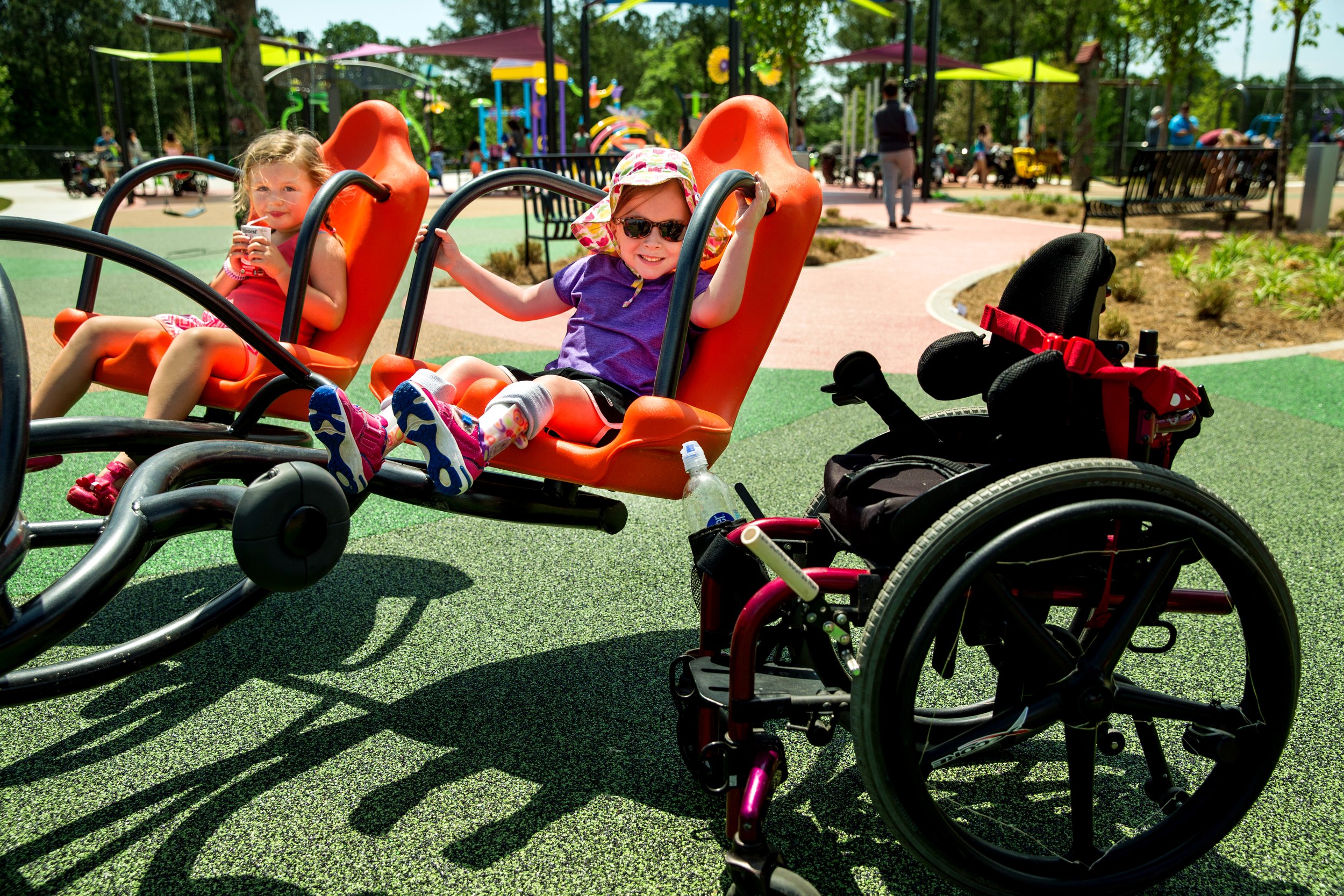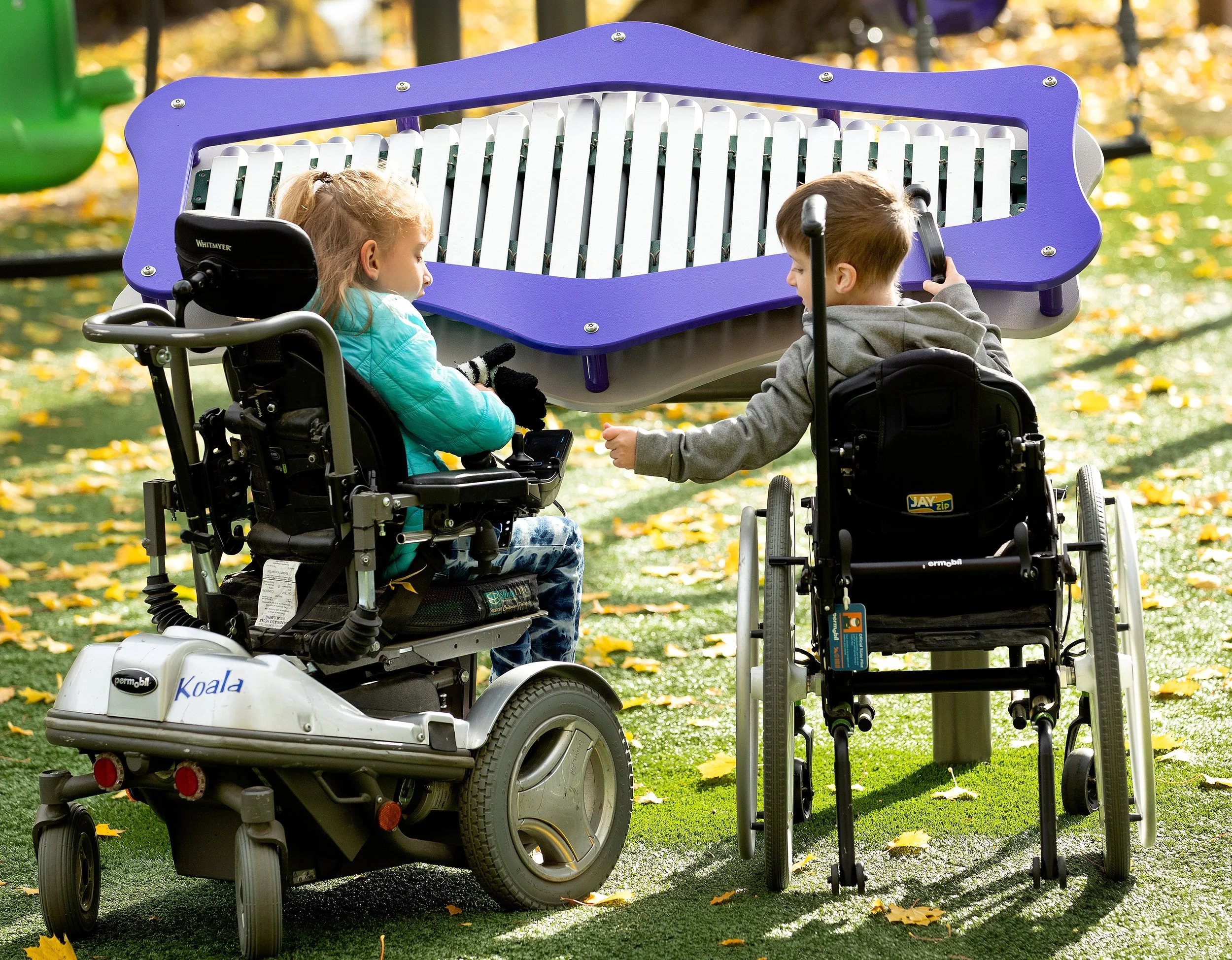How Inclusive Playgrounds Encourage Family Connection
We all have fond memories of playing on the playground - but not always ones where everyone could join in. Features like sand and inaccessible climbers have often created barriers to play, preventing some loved ones from fully participating.
Inclusive playgrounds change that. More than just places to play, they serve as community hubs, fostering connection, strengthening family bonds, and creating meaningful interactions that bring people of all ages and abilities together.
What Are Inclusive Playgrounds?
In recent years, inclusivity has redefined playgrounds, transforming them into spaces where people of all ages, abilities, and backgrounds can come together. Unlike traditional designs, inclusive playgrounds feature equipment that welcomes toddlers, teens, parents, grandparents, and individuals with disabilities - ensuring that play is for everyone.
The key difference lies in accessibility. With ramps, adaptive swings, sensory zones, and universally designed features, these playgrounds remove barriers, creating an environment where everyone can play, connect, and belong.
The Role of Inclusive Playgrounds in Strengthening Family Connections
Encouraging Shared Experiences
Family Bonding: Inclusive playgrounds bring families together, creating opportunities for shared play rather than separate experiences. These thoughtfully designed spaces foster deeper connections, encouraging spontaneous interactions and meaningful moments that might not happen in traditional playground settings. For example:
A parent can join their child on a group swing
Grandparents can push their grandchildren on accessible merry-go-rounds.
Siblings can explore sensory play zones side by side.
Reduce Barriers to Participation: Traditional playgrounds can unintentionally create barriers for individuals with physical or sensory limitations, leading to frustration or exclusion. Inclusive playgrounds break down these barriers by incorporating features like wheelchair-accessible surfacing, adaptive swings, and sensory zones, ensuring that everyone can participate fully. By fostering equal engagement, these spaces transform family outings into stress-free, enjoyable experiences where all members can play, connect, and create lasting memories together.
Intergenerational Interactions: Features like fitness zones, walking paths, and shaded seating areas create opportunities for meaningful interaction among all family members, regardless of age. Shared activities build stronger, more inclusive communities by encouraging people from different age groups to interact and work together.
Growth and Development
Promote Communication: Inclusive playgrounds create opportunities for families to collaborate, communicate, and build stronger connections through shared play. Thoughtfully designed elements encourage interaction and teamwork, fostering meaningful engagement for people of all ages and abilities.
Foster Empathy and Understanding: When families witness individuals of all abilities engaging in play, it cultivates empathy and expands their understanding of inclusion. These moments provide valuable opportunities for parents to discuss diversity, accessibility, and the importance of creating spaces where everyone feels welcome. In this natural, real-time learning environment, both children and adults develop a deeper sense of acceptance, helping to build stronger, more inclusive communities.
Case Study: CADES Inclusive Playground
CADES (Children and Adult Disability & Educational Services) is a nonprofit organization based in In Swarthmore, Pennsylvania, dedicated to supporting individuals with disabilities. With more than 16% of the local population - over 250,000 children and adults - living with a disability, the need for an inclusive playground was clear.
The CADES Inclusive Playground was designed to provide meaningful play experiences for people of all ages and abilities. The space features wheelchair-accessible merry-go-rounds, adaptive swings, inclusive climbers, and a large play structure with ramps and platforms. A music garden includes interactive panels that can be played using adaptive switches, while sensory-rich elements like a water table and sand pit encourage inclusive, hands-on exploration.
Designed using best practice research from PlayCore and Utah State University, the playground follows the Seven Principles of Inclusive Playground Design to ensure accessibility for as many individuals as possible. By removing barriers to play, the CADES Inclusive Playground creates a welcoming space where everyone can connect, explore, and experience the joy of play together.
Play for All
Inclusive playgrounds are more than just spaces for recreation - they are places where families bond and communities thrive. By offering accessible, engaging, and welcoming environments, these playgrounds ensure that everyone, regardless of age or ability, can share in the joy of play together.
Looking for products to specify? Check out GameTime's inclusive playground solutions on CADdetails.com.







